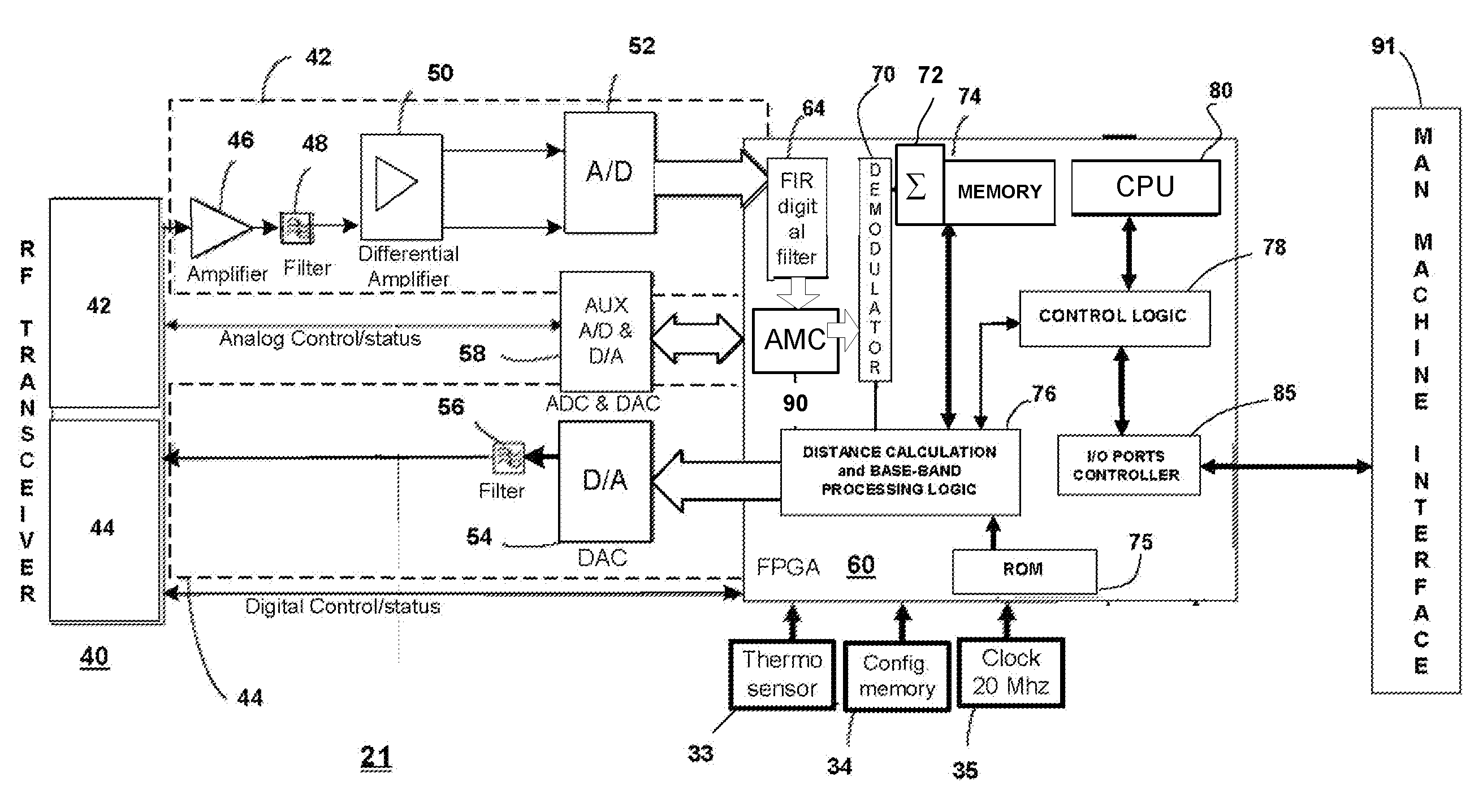Methods and system for reduced attenuation in tracking objects using RF technology
a technology of rf and object, applied in the field of radio frequency (rf)based identification, tracking and locating of objects, can solve the problems of not using the narrow bandwidth signal, conventional location-finding system, and suffer from certain inaccuracy, so as to reduce propagation loss and loss of accuracy of rf locating signals
- Summary
- Abstract
- Description
- Claims
- Application Information
AI Technical Summary
Benefits of technology
Problems solved by technology
Method used
Image
Examples
Embodiment Construction
[0031]Reference will now be made in detail to the preferred embodiments of the present invention, examples of which are illustrated in the accompanying drawings.
[0032]The present invention relates to method and system for RF-based identification, tracking and locating of objects. The method and system of the present invention uses a narrow bandwidth signal, such as VHF of lower frequencies, which minimizes propagation loss and loss of accuracy of the RF signals. Using a ranging signal in the low RF frequencies with narrow bandwidth increases the accuracy of tracking and the operating range of the tracking and location system.
[0033]Narrow bandwidth ranging signal(s) provides for longer ranges than existing ranging techniques given the same power. It is also less susceptible to multipath interference and attenuation.
[0034]Narrow band ranging can be used thanks to the following three techniques. The preferred embodiment uses all three:
[0035](1) A technique that improves signal to noise...
PUM
 Login to View More
Login to View More Abstract
Description
Claims
Application Information
 Login to View More
Login to View More - R&D
- Intellectual Property
- Life Sciences
- Materials
- Tech Scout
- Unparalleled Data Quality
- Higher Quality Content
- 60% Fewer Hallucinations
Browse by: Latest US Patents, China's latest patents, Technical Efficacy Thesaurus, Application Domain, Technology Topic, Popular Technical Reports.
© 2025 PatSnap. All rights reserved.Legal|Privacy policy|Modern Slavery Act Transparency Statement|Sitemap|About US| Contact US: help@patsnap.com



